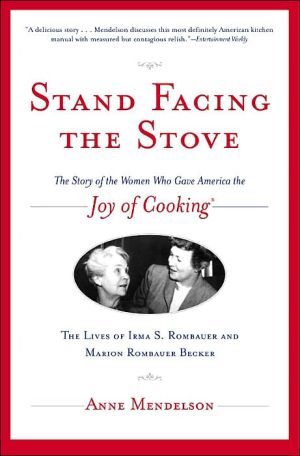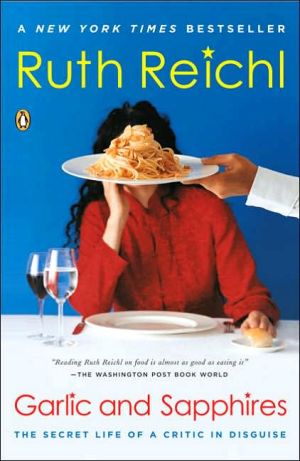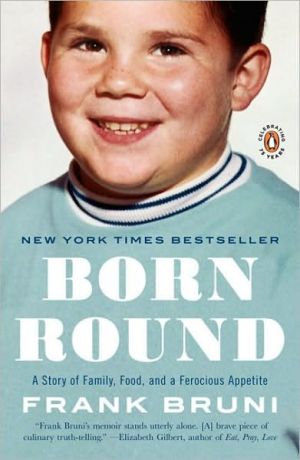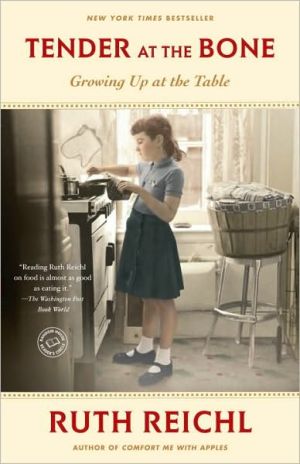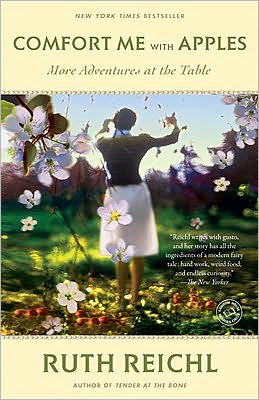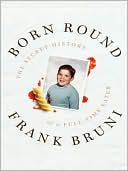Stand Facing the Stove: The Story of the Women Who Gave America The Joy of Cooking: The Lives of Erma S. Rombauer and Marion Rombauer
In 1931, Irma S. Rombauer, a recent widow, took her life savings and self-published a cookbook that she hoped might support her family. Little did she know that her book would go on to become America's most beloved cooking companion. Thus was born the bestselling Joy of Cooking, and with it, a culinary revolution that continues to this day.\ In Stand Facing the Stove, Anne Mendelson presents a richly detailed biographical portrait of the two remarkable forces behind Joy — Irma S. Rombauer and...
Search in google:
A New York Times Notable Book Sam Sifton "Worst idea I ever heard of," was what Irma Rombauer's family had to say when she set out in 1930, after her husband's suicide, to write a cookbook. "Irma's a TERRIBLE cook." But the resulting work, The Joy of Cooking, which Rombauer self-published the following year, went on to sell more than 14 million hardcover and paperback copies over six decades; it stands today as the most influential cookbook in American history. In Stand Facing the Stove, Anne Mendelson, a food writer and culinary historian, has set out to chronicle the unlikely story behind the success of The Joy of Cooking. The result is a dual biography of Rombauer and her daughter, eventual co-author and successor, Marion Rombauer Becker, as well as a publishing history of the book itself and a richly detailed examination of the evolution of American cooking from the mid-19th century to the 1970s. The latter's the most interesting. In two separate chapters - the book's best - Mendelson traces the cultural history of American home cooking, and in the process helps to explain the reasons for the classic cookbook's endurance: Rombauer's status as "a culinary amateur ... frankly bored with a lot of the solemn stuff that the competition expounded under the guise of culinary education." Rombauer was, Mendelson successfully argues, "the first cookbook writer who had been able to give the disorderly spectacle of modern American cooking some coherence through sheer force of personality." That force of personality is sadly absent from the biographical portions of Stand Facing the Stove, however. The family history - cultured middle-class Germans from St. Louis, loving battles between mother and daughter, etc. - is tangled and contradictory. After her husband blows his head off (his motive is unclear), Rombauer needs cash and decides - that simply, it would appear - to write a cookbook. "It was not a terribly practical plan," Mendelson tells us, "but it matched her view of her position in society." Dry publishing history follows. Joy did well as a vanity project, and Rombauer took it to a commercial publisher, Bobbs-Merrill, with which the family had a difficult relationship. Becker initially helped out only with the page design; later she was liaison to the publisher and in 1951 became the book's steward - redefining it, rewriting it, ensuring its legacy. Which is, it's worth pointing out, rich and important: students of the cultural history of American cuisine will find that Stand Facing the Stove offers a top-notch examination of the evolution of American home-cooking. Other readers should stick with the primary text - which is far more joyful, and far more revealing. -- Salon
Introduction\ We are told that a hard-boiled professional cook, when asked what she regarded as primary briefing for a beginner, tersely replied: "Stand facing the stove."\ — 1975 Joy of Cooking\ Most people who have heard of The Joy of Cooking have a vague idea that it was written by a mother and daughter. More remember the name of the former than the latter, which is as both would have wanted it; Irma Rombauer, who began the work, loved stardom as much as Marion Rombauer Becker, her eventual collaborator and successor, loved privacy. When I began investigating the story of authors and cookbook, I discovered a strange phenomenon among many cooks who had first used Joy in older, pre-Becker editions: an active partisanship in some mother-daughter contest that they perceived in the pages of the book. Their loyalty was invariably to the mother, and they believed that Marion Becker had either performed a kind of sabotage on the Rombauer Joy of Cooking or at least imposed her own inferior taste on it.\ This view of The Joy of Cooking didn't make much sense to me for some years, and still strikes me as fairly misguided. Yet the sheer frequency of the claim at last told me something. So many lay and professional observers from drastically varied backgrounds seem to have discerned an emotional and culinary tug-of-war in the book itself as to give any would-be historian pause. After a time it dawned on me that the very impulse to choose sides — or even think that there are sides to be chosen — is a clue to an important quality of the work: its authors inhabit it more genuinely, more personally, than most cookbook authors inhabit their creations. To the end of their lives, both of the Rombauers put themselves into The Joy of Cooking in a way rare among commercially published manuals of any sort but very common among what are called "vanity books."\ The Joy of Cooking did in fact start life as a vanity book: a brainchild for which the author pays the publisher, not vice versa. Thousands of such books appear each year, parading their begetters' assaults on the sonnet form, agendas for saving the world, or favorite recipes. In 1931 this one cost Irma Rombauer some $3,000 of the modest legacy her husband had left her on blowing his brains out — an amount equivalent to a year's low-level white-collar wages in the second year of the Great Depression. She was fifty-four years old when the volume appeared, an utter amateur with no known qualifications for publishing a cookbook.\ Her forlorn gamble paid off. Eventually it would inspire among a sizable coterie of users a love and loyalty surpassing the common attachment of cooks to cookbooks. A major reason for the affection in which its particular public held it is that somehow it never entirely lost the inner being of a vanity book. Its authors persisted in the amateurs' belief that those who might cook from their manual were as good as personal friends. What is more, they were right. It is true that there are plenty of cooks who don't much like Joy or find themselves more annoyed than enthralled by its assumption of a confidential friendship. But people on a certain wavelength tend to be habitués, cheerleaders, partisans. It was in fact Irma and Marion's well-placed faith in a sure author-reader bond that enabled them to put across such an unlikely slogan as "the joy of cooking."\ What on earth is joyous about cooking? People who do not know its capacity to bore, weary, and frustrate are people who have never cooked. When Marion Becker came to publish a brief memoir of the book's first thirty-odd years, one of the mementos of its success that she chose to reprint was a 1944 New York Times Book Review cartoon in which a well-upholstered dowager lies propped on a sofa gracefully perusing The Joy of Cooking while her harassed maid glares from a steaming kitchen. Marion and her mother knew very well that people do not find joy where they do not perceive freedom, control, leisure, or esteem. To put the matter in bald historical perspective, such things were not socially appropriate to cooking in the days when it was done by servants or those too poor to hire them. Ministering to the cook's morale became the task of cookbooks only when the cook was also the mistress of the household — or sometimes, as life got more complicated, the master.\ The Depression did not initiate the departure of hired cooks from American households, a demographic readjustment that had begun at least a century earlier. But it speeded up the process for middle-class families, leaving many people occasionally or permanently responsible for producing meals that they would previously have paid someone else to get on the table. Irma was born into and remained in a somewhat privileged sisterhood who did more of their own cooking than their counterparts of a few generations back but could rely on "domestics" (as some tactfully called them) to see to a good part of the week's meals. She knew, however, that millions of women who might once have told the cook what to make for dinner now were their own cooks. It was to assure such people that their new responsibility really wasn't menial that the social implications of cookery could now be enlarged to include "joy," a discreet rearrangement of necessity so as to make it not only a virtue but a delight.\ Irma Rombauer was not the only cookery writer who sought to infuse a note of genteel optimism into the subject when changing times expanded the ranks of those who had to cook. But she did it better than anyone else. Where other culinary morale-builders habitually coated a bitter pill with large doses of cuteness and synthetic cheer, she was neither trivial nor affected. Readers light-years removed from her dignified existence responded instinctively to the unique help she held out: her own companionship. She did not, like dozens of professional food writers, contrive a silly illusion of sociability from bits of mechanical claptrap. She had an inborn command of the real thing. Throughout her belated writing career she always managed to give the impression of taking her public with her on a private lark — an impression she could not have conveyed if she had not completely believed in it herself. She never lost the stance of an amateur addressing amateurs, calling not so much on an infallible knowledge of cooking (which in any case she did not possess) as on the perfectly correct belief that she was fun to be with. There was something in her presence to tell the most discouraged beginner why cooking and joy deserved to be mentioned in the same breath.\ Irma's gifts as a writer are discussed elsewhere in this book; suffice it to say here that Marion did not share them. When she took over The Joy of Cooking from her mother, she worked very hard (with a great deal of help from her husband) to simulate the original tone and style, and probably did better at it than anyone else could have. But "simulate" is the operative word. Something had gone out of the book. The Irma loyalists who picked up new editions and felt that the beloved presence — fey, shrewd, saucy, practical, airily homespun — had been infringed on were not mistaken. Their resentment is the measure not of Marion's failure to be Irma but of her success in being Marion — in other words, maintaining the extraordinarily personal, vanity-book quality of The Joy of Cooking. Had she not thoroughly infused it with her own sensibility, that quality would have been falsified. Earnest and careful where her mother had been insouciant and waggish, she was nonetheless equally dedicated to a notion of real, concrete friendship with one's readers that would not have occurred to most professional food writers. This bond had much to do with the fact that both women had come to the business of cookbook writing rather late in life, never having thought of cooking as a particularly momentous priority during their careers as wives and mothers. The years they had spent cooking for only ordinary domestic motives set their work apart from even very good cookbooks cranked out by trained recipe developers with planned agendas to set before the reader.\ The joy that the daughter sought to encourage in cooking did not exactly match the blithe example that was the mother's striking contribution. The generation for which Marion wrote was both more bone-ignorant of culinary basics and more occupied with high-flown talk of cooking as an "art," one of the signal delusions of our time. What she tried to point to was the joy of learning — exploring the splendid richness of cookery as a body of knowledge to be absorbed by the brain en route to the fingertips. She could not, like Irma, effortlessly conjure up her own personality in her writing, but here and there she wove in small talismans of her own private being, offered quite sincerely to readers as tokens of friendship.\ These two highly individual presences do not coexist in The Joy of Cooking in an ideally seamless manner. But part of their book's energy and long-term drawing power lies in incongruities that more practiced professional hands might have smoothed out. The collision between the two authors' personalities is just one of these. The work is rife with not only personal but culinary contradictions — a weakness, but also a strength. Its approaches to cooking are provincial and cosmopolitan, muddled and lucid, scrupulous and free-spirited. It messily crams in tokens of many eras past (harking back to Irma's mother and grandmother) and present (just emerging at the end of Marion's life). At no time in Joy's career has it been one polished summary of all the kitchen virtues. Rather it exudes an imperfect hybrid vigor easier to feel than to describe.\ Irma and Marion were both unabashedly amateur cooks — and haste-driven ones at that. Of course neither had any kind of career schooling in cookery. What is more, neither was known in private life for concocting arduous, elaborate dinners from scratch. Both were very fond of various canned shortcuts and loved more than anything to assemble a quick, simple luncheon or supper that could be fitted in among more important claims on their time. Arbiters of taste who go to The Joy of Cooking looking for one masterly dish after another will find that the recipes in any edition from 1931 on present a picture of American cooking filled with wild inconsistencies — the inconsistencies of real people's real preferences, from canned-soup sauces to homemade noodles.\ Nor has Joy ever stood as an imparter of infallible culinary expertise. It has always had small (or not so small) lapses and lacunae. The scope of what the Rombauers tried to do grew with every edition, and so did what they succeeded in doing. But there is much that they might more wisely not have attempted. Irma herself sometimes ventured onto shaky ground, and in the last two revisions Marion often bit off more information than she could chew. One can find the mother telling people to ferment cabbage for sauerkraut at 85ƒF (a sure recipe for a putrid mess) and the daughter spilling much ink on the foundations of French cooking without conveying the sense of something honestly and naturally mastered. Yet in an unaccountable way, The Joy of Cooking always has lighted up the subject of cooking far better than some more rigorously correct books. There is nothing to compare with it for cutting through the perplexities to reveal what makes sense.\ The famous old cookbook as I have come to know it is patchy, accidental, inconsistent. That is just what is best about it. It records the sheer improbability of twentieth-century American cooking from the Great Depression to the Ford administration, a lawless mélange of blueprints for progress, nostalgic hankerings, gourmet cults, timesaving expedients, media-inspired fads, and unexpected rebellions. The accomplishment would have been possible only for inspired amateurs following their own instincts, buoyed by a strange but completely justified sense of solidarity with their audience.\ Irma thanked her "friends, known and unknown," for letting her feel "far more useful than I ever expected to be." Marion, who considered Joy a touchstone of disinterestedness in a terribly mercenary field, believed that its authors should "owe no obligation to anyone but themselves and you," the reader. Both felt honestly privileged to meet millions of people through their book. I hope that meeting them through the story of their lives will be a reciprocal privilege for admirers of The Joy of Cooking, as it was for me.\ Copyright © 1996, 2003 by Anne Mendelson
ContentsPreface AcknowledgmentsIntroductionPart I1 The Golden Age of St. Louis 2 Beginnings and Endings 3 The Rombauers After the War 4 The Birth of Joy Part II5 Chronicles of Cookery 1 6 Rombauer and Bobbs-Merrill: The Making of an Enmity 7 Family Regroupings 8 War Maneuvers Part III9 Chronicles of Cookery 2 10 Indian Summer Interrupted 11 The Last Battle Part IV12 Little Acorn and Wild Wealth 13 Marion's Last Years EpilogueNotes Selected BibliographySuggested Reading Index Copyright © 1996, 2003 by Anne Mendelson
\ Sam Sifton“Worst idea I ever heard of," was what Irma Rombauer's family had to say when she set out in 1930, after her husband's suicide, to write a cookbook. "Irma's a TERRIBLE cook." But the resulting work, The Joy of Cooking, which Rombauer self-published the following year, went on to sell more than 14 million hardcover and paperback copies over six decades; it stands today as the most influential cookbook in American history.\ In Stand Facing the Stove, Anne Mendelson, a food writer and culinary historian, has set out to chronicle the unlikely story behind the success of The Joy of Cooking. The result is a dual biography of Rombauer and her daughter, eventual co-author and successor, Marion Rombauer Becker, as well as a publishing history of the book itself and a richly detailed examination of the evolution of American cooking from the mid-19th century to the 1970s. The latter's the most interesting. In two separate chapters — the book's best — Mendelson traces the cultural history of American home cooking, and in the process helps to explain the reasons for the classic cookbook's endurance: Rombauer's status as "a culinary amateur ... frankly bored with a lot of the solemn stuff that the competition expounded under the guise of culinary education." Rombauer was, Mendelson successfully argues, "the first cookbook writer who had been able to give the disorderly spectacle of modern American cooking some coherence through sheer force of personality."\ That force of personality is sadly absent from the biographical portions of Stand Facing the Stove, however. The family history — cultured middle-class Germans from St. Louis, loving battles between mother and daughter, etc. — is tangled and contradictory. After her husband blows his head off (his motive is unclear), Rombauer needs cash and decides — that simply, it would appear — to write a cookbook. "It was not a terribly practical plan," Mendelson tells us, "but it matched her view of her position in society."\ Dry publishing history follows. Joy did well as a vanity project, and Rombauer took it to a commercial publisher, Bobbs-Merrill, with which the family had a difficult relationship. Becker initially helped out only with the page design; later she was liaison to the publisher and in 1951 became the book's steward — redefining it, rewriting it, ensuring its legacy.\ Which is, it's worth pointing out, rich and important: students of the cultural history of American cuisine will find that Stand Facing the Stove offers a top-notch examination of the evolution of American home-cooking. Other readers should stick with the primary text — which is far more joyful, and far more revealing. -- Salon\ \ \ \ \ \ Publishers Weekly - Publisher's Weekly\ When St. Louis housewife Irma von Starkloff Rombauer (1877-1962) self-published The Joy of Cooking in 1931, she was, at age 54, a total amateur in the kitchen. Indianapolis publisher Bobbs-Merrill helped make her cookbook a huge bestseller in its subsequent editions. Whereas Rombauer brought a homespun, spontaneous style to her recipes, her daughter, Maron Rombauer Becker (1903-1976), who collaborated on Joy starting with the 1948 revision, transformed it into an all-purpose learning tool and also imbued it with health-food consciousness. By following Joy's successive incarnations as well as rival manuals, Mendelson, a culinary historian and freelance writer, serves up a delightful social history of Americans' changing cooking and eating habits. She sets Rombauer's German-American roots in the context of a thriving Midwestern immigrant community and also unravels both her and her daughter's tangled, acrimonious relationship with Bobbs-Merrill. Mendelson's narrative is enlivened by numerous personal stories: the suicide in 1930 of Rombauer's manic-depressive husband, Edgar, a civil rights lawyer; Becker's championing of modernist art and her crusading for affordable housing in Cincinnati; her often tense relationship with her mother, who criticized her plain looks; and her steadfast, loving care for her mother, who suffered repeated strokes, even as she herself fought the cancer to which she eventually succumbed. Photos. (Nov.)\ \ \ Library JournalThis is an entertaining, insightful biography of the mother-daughter collaborators who gave America the great standby for cooking, The Joy of Cooking (first self-published in 1931). Given access to extensive papers and memorabilia of Irma Rombauer and daughter Marion Becker, Mendelson, a journalist and culinary historian, chronicles their lives and work, which brought eight major editions of The Joy of Cooking into being. She also presents a publishing story, detailing the cookbook as a commercial publication from acquisition by publisher Bobbs-Merrill to its marketing strategy. Mendelson shows how successive editions were a mirror of their time, exhibiting the shifting culinary tastes of the nation. The book also reflects on Rombauer's desire for fame and daughter Becker's preference for privacy. Mendelson's book is a wonderful account of one of the most popular American cookbooks and the women who wrote it. Recommended for biography and cookery collections.Michael A. Lutes, Univ. of Notre Dame Lib., South Bend, Ind.\ \
